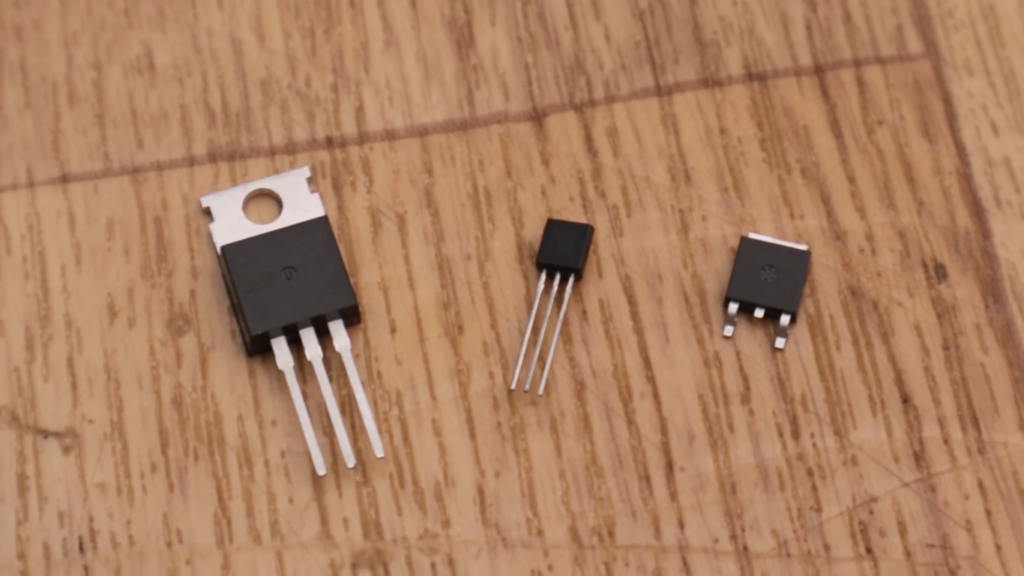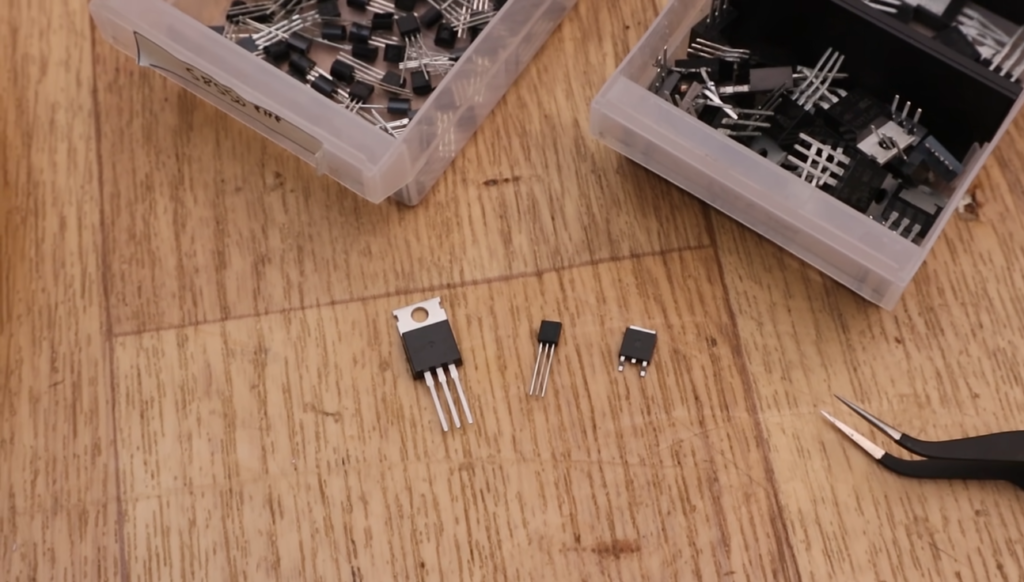In the ever-evolving world of electronics, two fundamental components, the operational amplifier (op-amp) and the transistor, stand as pillars of modern circuit design. These versatile devices have played an integral role in countless applications, from the simplest of audio amplifiers to the most intricate computer processors. While both op-amps and transistors are vital components in electronic circuits, they possess distinct functionalities, characteristics, and applications that set them apart.
Understanding the differences between these two components is essential for engineers, hobbyists, and anyone delving into electronics, as it not only unlocks the potential for creative circuit designs but also ensures optimal performance in a wide array of applications.
In this comprehensive article, we will explore the key disparities between op-amps and transistors, shedding light on their unique features, functions, and advantages in order to provide a clear understanding of when and how to use each component in practical electronic designs.
Op-Amp Definition
Operational Amplifiers, commonly known as op-amps, are fundamental building blocks in the field of analog electronics. They play a crucial role in countless electronic applications, ranging from simple signal conditioning to complex signal processing tasks. In this post, we will delve into the definition and key characteristics of op-amps.

One of the defining features of an ideal op-amp is its infinite input impedance. This means that the op-amp draws negligible current at its input terminals, making it suitable for interfacing with various sources without significantly loading them. Additionally, an ideal op-amp has zero output impedance, meaning it can deliver any amount of current at its output terminal without affecting its output voltage.
Moreover, op-amps exhibit an extremely high open-loop gain, often in the order of tens of thousands or more. This gain allows even tiny voltage differences between the inputs to be amplified significantly at the output. However, due to practical limitations, real-world op-amps have finite open-loop gains, typically in the range of tens of thousands to hundreds of thousands.
Op-amps can be operated in two different configurations: open-loop and closed-loop. In an open-loop configuration, the op-amp operates without any external feedback, and its output voltage is determined solely by the voltage difference at its input terminals and the open-loop gain. Open-loop configurations are rarely used in practical applications due to their inherent instability and sensitivity to noise.
Closed-loop configurations, on the other hand, involve providing a portion of the output voltage back to one of the op-amp’s input terminals through external feedback components, such as resistors. This feedback helps control the overall gain and other performance characteristics of the op-amp, making it more predictable and stable. Closed-loop configurations are extensively used in practical electronic circuits.
Op-amps are available in various types and models to suit specific applications. Some op-amps are designed for general-purpose applications, while others are optimized for specific tasks, such as low-noise amplification, high-frequency operation, or high-voltage applications.

Op-Amp Architecture
Op-amps typically have two input terminals, denoted as the inverting (-) and non-inverting (+) inputs, and a single output terminal. The input voltage difference between the inverting and non-inverting inputs determines the output voltage, amplified by a factor known as the open-loop gain (AOL). Op-amps have a high input impedance and a low output impedance, making them excellent for voltage amplification tasks.
Feedback Configurations
One of the key features of op-amps is their use in various feedback configurations. Negative feedback is most commonly used, where a fraction of the output voltage is fed back to the inverting or non-inverting input. This configuration stabilizes the op-amp’s gain, and linearity, and reduces distortion, making it a crucial component in various signal processing and control circuits.
Transistor Definition
A transistor is a fundamental semiconductor device that revolutionized the field of electronics and is a cornerstone of modern technology. It plays a critical role in amplification, switching, and signal processing in countless electronic circuits and systems.
At its core, a transistor is a three-terminal semiconductor device with three main layers: the emitter, base, and collector. These layers are typically made of semiconductor materials like silicon or germanium. There are two primary types of transistors: bipolar junction transistors (BJTs) and field-effect transistors (FETs), each with its distinct operating principles [2].
Bipolar Junction Transistors (BJTs):
BJTs consist of two types: NPN (negative-positive-negative) and PNP (positive-negative-positive). In an NPN transistor, the emitter is made of N-type material, the base is P-type, and the collector is N-type. In a PNP transistor, the polarities are reversed. The flow of current between the collector and emitter is controlled by the current at the base terminal. A small current at the base can regulate a much larger current flow from the collector to the emitter, allowing BJTs to function as current-controlled current amplifiers.

Field-Effect Transistors (FETs):
FETs are voltage-controlled devices and come in two main types: enhancement-mode and depletion-mode FETs. The most common type is the Metal-Oxide-Semiconductor FET (MOSFET). FETs have a gate, a source, and a drain terminal. By applying a voltage at the gate terminal, an electric field is created, controlling the flow of current between the source and drain terminals. FETs offer high input impedance and are well-suited for various applications, including amplification and switching.
Transistors have several key characteristics that make them essential components in electronic circuits:
- Amplification: Transistors can amplify weak electronic signals to higher power levels, enabling them to drive speakers, display information on screens, and process data in numerous electronic devices;
- Switching: Transistors can act as electronic switches, turning currents on or off in response to input signals. This property is crucial for digital logic circuits and microprocessors, where binary information is processed;
- Signal Processing: Transistors enable various signal processing functions, such as filtering, modulation, and demodulation. They are integral components in communication systems, audio equipment, and many other applications;
- Size and Efficiency: Transistors are much smaller and consume less power compared to older vacuum tube technology, making them ideal for compact and energy-efficient electronic devices;
Transistors have led to a dramatic advancement in electronics and computing, paving the way for smaller, faster, and more powerful devices. Their versatility, efficiency, and ability to perform complex tasks make them indispensable in modern technology, shaping the world we live in today.
Are Op-Amps Made of Transistors?
Operational amplifiers (op-amps) are made of transistors, along with other passive components and circuitry. The core of an op-amp typically consists of multiple transistors configured in a way that provides the desired amplification and performance characteristics.
An op-amp is a complex integrated circuit that contains various transistors, resistors, capacitors, and sometimes other components on a single chip. These components are interconnected to form the internal circuitry of the op-amp. The specific arrangement and design of these components determine the op-amp’s behavior and functionality.
The most common type of op-amp is based on bipolar junction transistors (BJTs). These are known as BJT-based op-amps. The internal circuit of a BJT-based op-amp includes multiple BJTs connected in specific configurations to achieve high input impedance, high gain, and other desired characteristics. The input differential amplifier stage in an op-amp, responsible for amplifying the voltage difference between the inverting and non-inverting inputs, often employs BJTs.

There are also op-amps based on field-effect transistors (FETs), known as FET-based op-amps or CMOS op-amps. CMOS (Complementary Metal-Oxide-Semiconductor) technology allows the integration of both N-type and P-type FETs on the same chip. CMOS op-amps are known for their low power consumption and high input impedance [3].
Regardless of the specific technology used (BJTs or FETs), the presence of transistors is essential for the operation of op-amps. The transistors inside the op-amp control the current flow and voltage levels within the device, allowing it to amplify signals and perform various signal-processing tasks.
Why Are Transistors Used In Op-Amp?
Transistors are used in operational amplifiers (op-amps) for several critical reasons, as they are instrumental in enabling the op-amp’s core functionality and desirable characteristics.
Below are some key reasons why transistors are an essential part of op-amps:
- Amplification: Transistors are active semiconductor devices that can amplify weak signals. Op-amps are designed to provide high voltage gain, which is necessary for a wide range of applications, including audio amplification, signal conditioning, and sensor interfacing. By utilizing transistors in the amplifier stages of an op-amp, the device can achieve the required amplification levels;
- High Input Impedance: Transistors, especially field-effect transistors (FETs), have high input impedance. In op-amps, this characteristic is crucial as it ensures that the op-amp draws minimal current from the input signal source, thereby avoiding signal distortion and loss. High input impedance allows the op-amp to act as an excellent buffer between the input source and the rest of the circuit;
- Biasing and Stabilization: Transistors are employed in op-amps to create biasing circuits that establish the appropriate operating point for each transistor. This biasing ensures that the transistors are operating in their linear region, where their amplification behavior is predictable and stable. Proper biasing is vital for maintaining the op-amp’s performance and preventing distortion;
- Feedback and Closed-Loop Operation: Op-amps are commonly used in closed-loop configurations, where a portion of the output voltage is fed back to the input terminals. Transistors play a crucial role in setting up this feedback path. By adjusting the transistor configuration, the gain and other characteristics of the op-amp can be controlled, allowing it to operate in various modes like inverting, non-inverting, and differential amplification;
- Output Current Capability: Transistors in op-amps contribute to the device’s output current capability. When configured in specific ways, they can provide substantial output current to drive loads such as speakers, motors, or other electronic circuits;
- Size and Integration: Transistors are small semiconductor devices, allowing op-amps to be integrated into compact IC (integrated circuit) chips. The miniaturization and integration of transistors make modern op-amps small, energy-efficient, and cost-effective;
- Temperature Stability: The characteristics of certain transistors, such as the bandgap reference transistor, can be exploited to achieve temperature-stable performance in op-amps. This is essential for maintaining consistent operation across a wide range of temperatures;
- Low Distortion: Transistors, when properly biased and utilized in linear regions, contribute to low-distortion amplification. This is critical for applications requiring accurate signal reproduction and minimal signal degradation [4];

What Is The Difference Between An Op-Amp And Transistor:
Operational amplifiers (op-amps) and transistors are fundamental components in electronics, but they serve different purposes and play distinct roles in electronic circuits.
While both are crucial for signal processing and amplification, they have unique characteristics and applications:
Amplifying Gain
The primary function of both op-amps and transistors is to amplify signals. However, the way they achieve amplification is different.
On the other hand, op-amps are specifically designed for high-gain voltage amplification. They contain multiple transistors configured to achieve an extremely high open-loop gain. This means even tiny voltage differences between the inputs can result in a much larger output voltage. Op-amps provide an integrated solution for amplification, and their high gain makes them suitable for a wide range of applications, from simple signal conditioning to complex analog signal processing tasks.
Stabilizing Component
Transistors, especially bipolar junction transistors (BJTs), require careful biasing and stabilization to operate in their linear region for proper amplification. Biasing circuits are necessary to set the operating point of transistors to ensure they remain in their active region. Additionally, temperature variations and other factors can impact the stability and performance of transistor-based amplifiers.
Op-amps, on the other hand, come with built-in stabilization and biasing. Their internal circuitry is carefully designed to maintain stable operation, and they can function effectively across various temperature ranges. This inherent stability simplifies circuit design and reduces the need for additional external components.

Build-Up
Transistors are discrete semiconductor devices, which means they are available as separate components and need to be externally connected to form electronic circuits. Depending on the application, multiple transistors may be combined with passive components to achieve the desired amplification or switching behavior.
Op-amps, on the contrary, are integrated circuits (ICs) that contain multiple transistors, resistors, and capacitors on a single chip [6]. This integration makes op-amps compact, reliable, and easy to use. As self-contained units, op-amps only require a few external components to function correctly in most applications.
Space and Power
In terms of space and power efficiency, op-amps have the upper hand. Transistors, when used individually in circuit designs, can consume significant space and power, especially when high levels of amplification are required. Additionally, discrete transistor-based circuits may need extra power for biasing and stabilization, adding to their overall power consumption.
Op-amps, as integrated circuits, are designed to be space-efficient and consume relatively low power. Their high gain allows them to achieve amplification with minimal power requirements. This advantage is particularly crucial in modern electronic devices that demand compact designs and energy efficiency.

Cost
Transistors are generally more cost-effective compared to op-amps on a per-unit basis. However, this cost advantage diminishes when considering the entire circuit implementation. Transistor-based circuits often require additional components for biasing, stabilization, and protection. The total cost of these components, along with the space and effort needed for assembly, may exceed the cost of using an op-amp for similar functions.
Op-amps, despite being more expensive individually, offer cost savings in terms of simplified circuit design, reduced component count, and faster assembly. Their integration also enhances reliability, leading to cost savings over the lifetime of the electronic device or system.
Types
Transistors come in various types, such as bipolar junction transistors (BJTs), field-effect transistors (FETs), and insulated gate bipolar transistors (IGBTs), each with its specific applications and characteristics. Each type of transistor has its advantages and limitations, making them suitable for different tasks.
Op-amps are available in different types as well, such as BJT-based op-amps and CMOS op-amps (based on field-effect transistors). These different types cater to diverse application requirements, including precision amplification, low-power operation, and high-frequency applications [7].

FAQ:
1. Why do we use an op-amp instead of a transistor?
Op-amps offer several advantages over individual transistors, making them preferable in many applications:
- High Gain: Op-amps have built-in high voltage gain, simplifying circuit design and reducing the need for external components to achieve significant amplification;
- Stability: Op-amps come with internal stabilization and biasing, making them easier to use and providing consistent performance across temperature variations;
- Integrated Solution: Op-amps are integrated circuits that contain multiple transistors and other components on a single chip, saving space and improving reliability;
- Versatility: Op-amps can be configured in various ways using feedback to suit different applications, whereas transistors alone may require more complex circuits for similar functionality;
2. What is the difference between an op-amp and an amplifier?
An amplifier is a general term for a circuit or device that increases the magnitude of a signal. An op-amp, short for operational amplifier, is a specific type of high-gain voltage amplifier. In other words, all op-amps are amplifiers, but not all amplifiers are op-amps.
3. Why is an op-amp better?
Op-amps are better in many applications due to their high gain, inherent stability, compactness, and integration. They simplify circuit design, offer precise amplification, and can perform various signal-processing tasks.
4. What are the disadvantages of an op-amp:
- Limited Current Output: Op-amps have limited output current capabilities, making them unsuitable for driving high-power loads directly;
- Voltage Limitations: The output voltage of an op-amp is typically limited by the power supply voltage range;
- Noise Sensitivity: Op-amps can be sensitive to noise and interference, requiring careful consideration in noise-critical applications;
5. What are the advantages of an op-amp over a normal amplifier?
The advantages of op-amps over normal amplifiers (using discrete transistors) include:
- Higher Gain: Op-amps offer higher voltage gain, reducing the need for cascading multiple stages for significant amplification;
- Built-in Stabilization: Op-amps come with internal biasing and stabilization, simplifying circuit design and ensuring consistent performance;
- Integration: Op-amps are integrated circuits, making them compact, reliable, and easy to use in various applications;
6. How many transistors are in an op-amp?
The number of transistors in an op-amp can vary depending on the specific design and technology. Modern op-amps can contain several dozen to hundreds of transistors, along with other components.
7. Is an op-amp active or passive?
An op-amp is an active component because it requires a power supply to operate and actively amplifies the input signal.
8. Is an op-amp negative or positive?
An op-amp has both negative and positive input terminals, denoted as inverting (-) and non-inverting (+) inputs, respectively. The output voltage is based on the voltage difference between these two inputs.
9. Why are op-amps popular?
Op-amps are popular due to their versatility, high gain, built-in stability, and compactness. They are used in a wide range of electronic circuits and applications, from simple amplification to complex signal processing.
10. How do op-amps and transistors differ in terms of control mechanisms?
Transistors are current-controlled devices, where the input current at the base (in BJTs) or the gate (in FETs) determines the output current between the emitter and collector (in BJTs) or the drain and source (in FETs). In contrast, op-amps are voltage-controlled components. The voltage difference between the inverting and non-inverting inputs governs the output voltage, and the op-amp’s high gain amplifies this difference.
11. Which one is more suitable for signal processing tasks?
Op-amps are the go-to choice for signal-processing tasks due to their high gain, precision, and stability. They can perform mathematical operations like addition, subtraction, differentiation, and integration, making them essential in active filters, instrumentation amplifiers, and analog computing circuits. Transistors, while not designed specifically for signal processing, are essential in building active components like current mirrors and constant current sources used in various signal conditioning circuits.
12. Can op-amps and transistors be used together in a circuit?
Yes, op-amps and transistors are often used together in electronic circuits to take advantage of their respective strengths. For example, op-amps can provide a stable and accurate input to control transistors’ amplification or switching. This combination is common in audio amplifiers, power supplies, and motor control applications, where the op-amp precisely controls the transistor’s behavior.
13. Which component is better for audio amplifier applications?
Op-amps are generally preferred in audio amplifier applications due to their low noise, high gain, and accurate amplification capabilities. They can be configured in various feedback configurations to achieve the desired amplification characteristics without significant distortion. However, transistors can be used as output stages in high-power audio amplifiers, where they handle the higher current requirements for driving speakers or loads.
14. In terms of stability, which component is more reliable?
Op-amps are inherently stable devices when used in appropriate feedback configurations. Their behavior is well-defined, and they have excellent linearity and low distortion. Transistors, especially in high-power or high-frequency applications, may require more careful consideration and additional circuitry to maintain stability and avoid issues like thermal runaway.
15. Are there any power considerations when choosing between op-amps and transistors?
Yes, power considerations are crucial in choosing between the two components. Op-amps are generally low-power devices, making them suitable for battery-operated or low-power applications. On the other hand, transistors are more commonly used in high-power circuits, such as power amplifiers and voltage regulators, where they can handle higher currents and power dissipation.
16. Which component is more suitable for digital circuits?
Transistors are the heart of digital circuits, serving as switches in logic gates and flip-flops. Their ability to amplify current makes them crucial in digital signal processing and computation. Op-amps, although not primarily designed for digital applications, can still play supporting roles in some analog-to-digital conversion tasks or as interface elements between analog and digital domains.
17. Can an op-amp replace a transistor and vice versa?
While there may be some cases where an op-amp can be used as a substitute for a transistor and vice versa, it is essential to consider the specific requirements of the circuit and the roles these components play. Each component has its strengths and limitations, and selecting the appropriate one will depend on factors such as desired gain, bandwidth, power requirements, and the nature of the application.
18. Are there any cost considerations when choosing between op-amps and transistors?
Generally, op-amps tend to be more expensive than individual transistors due to their higher complexity and integrated circuitry. However, the cost difference may vary based on the specific models and manufacturers. In some cases, using integrated op-amp chips may actually reduce the overall cost of a circuit compared to using multiple discrete transistors for the same functionality.
19. Which transistor is used in an op-amp?
Op-amps can be based on either bipolar junction transistors (BJTs) or field-effect transistors (FETs). BJT-based and CMOS-based op-amps are common variants.
20. Why is an op-amp called 741?
The “741” in the op-amp’s name, such as the LM741, refers to one of the early and widely-used op-amp models. The number does not have any specific technical significance.
21. What is the principle of an op-amp?
The principle of an op-amp is based on differential input amplification and high open-loop gain. It amplifies the voltage difference between its two input terminals and provides a high-gain output voltage.
22. Is an operational amplifier analog or digital?
An operational amplifier is an analog device. It processes continuous analog signals and provides analog outputs.
23. Do op-amps increase voltage or current?
Op-amps are primarily used to increase voltage. They amplify the voltage difference between their input terminals to provide a higher output voltage.
24. Why do op-amps have two inputs?
Op-amps have two inputs, the inverting and non-inverting inputs, to facilitate differential amplification. The voltage difference between these inputs is amplified at the output.
25. Do op-amps draw current?
Op-amps draw a small amount of current from the power supply to operate. However, their input impedance is high, so they draw minimal current from the input signal source.
26. Are op-amps used in speakers?
Op-amps can be used in audio amplification circuits to drive speakers indirectly, but they are not typically used as the final power amplifier stage to directly power speakers.
27. What type of amplifier is an op-amp?
An op-amp is a voltage amplifier, designed to amplify voltage signals.
28. What are the 3 properties of an op-amp?
Three properties of an op-amp are:
- High voltage gain;
- High input impedance;
- Low output impedance;
29. Why is an op-amp versatile?
Op-amps are versatile due to their ability to perform a wide range of functions, including amplification, filtering, integration, differentiation, and mathematical operations, based on feedback configurations.
30. Can op-amps reduce voltage?
Yes, op-amps can be used in configurations like inverting amplifiers, where the output voltage is the inverted and amplified version of the input voltage, effectively reducing the voltage.
Useful Video: Difference between Transistor and Op Amp
References
- https://www.circuitsgallery.com/op-amp-vs-transistor/
- https://www.edaboard.com/threads/which-is-better-for-amplifying-gain-transistor-or-op-amp.41513/
- https://electronics.stackexchange.com/questions/657290/what-is-the-difference-between-using-transistors-and-op-amps-in-pre-amplifiers
- https://www.crazyengineers.com/threads/difference-between-transister-and-op-amp.3493
- https://www.reddit.com/r/ECE/comments/lp7c9/designing_transistor_amplifiers_vs_opamp/
- https://gearspace.com/board/geekzone/846035-what-difference-between-discrete-opamp-vs-just-transistors.html
- https://engineering.science.narkive.com/33Q8jqko/what-is-the-difference-between-transistor-amplifier-and-op-amp-in-simple-words














Leave a Reply